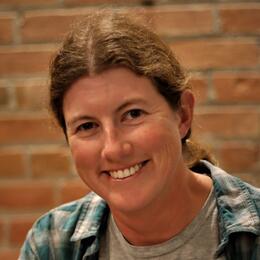A few weeks ago, Michelle Nino and her mother and sister visited the beach-nesting bird colony on the south end of Wrightsville Beach. I was lucky enough to run into them while I was observing the birds with a scope, so I got to talk with them.Everyone was taken with the birds and had fun seeing some of their nesting behaviors.
Michelle and her family "digiscope" nesting birds at Wrightsville Beach with Lindsay Addison. By Marlene Eader.
Michelle, a rising third-grader, is an aspiring journalist, so she not only enjoyed watching the terns and skimmers care for their chicks, she wrote an article about her experience. So here's a post from our youngest-ever guest blogger:
When I went to the Bird Sanctuary at Wrightsville Beach, I saw many birds and they made lots of noise. One was called an American Oystercatcher. American Oystercatchers got their name because they catch oysters, clams, shellfish, and mussels. I saw a lot of birds nesting. I was looking through binoculars and I took out my camera and started taking pictures through it, but I didn’t know that coastal biologists do that too. A coastal biologist named Lindsay told me that. She showed me three types of birds in the sanctuary: American Oystercatcher, Black Skimmer, and Willet. I loved looking at the birds through binoculars and watching them scoop up fish for their chicks. Now I’m interested in birds and I want to get my own binoculars to look at birds all the time.




